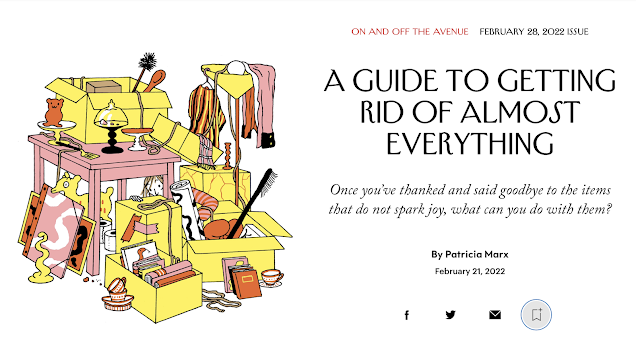I want to dress like Rebecca Burgess
 |
| Rebecca Burgess |
Burgess, an accomplished natural dyer, farmer, weaver, author and executive director of Fibreshed, has worn only clothing whose dyes, fibres and labour come from within 150 miles of her home (in Northern California) for nearly a decade. Yes, even her jeans. (Spoiler: She wears the prototype.)
She advocates for an international system of regional textile communities that will support local farmers and artisans. See Fibreshed's "Soil to Soil" model here.
In a Globe and Mail interview in 2016, she told journalist Jeanne Beker,
"...I thought if I'm going to be writing and publishing about natural dyes and I'm concerned about war and imperialism and people taking from other people, I should probably look at what I'm wearing: It's the one arena in which I have some control, because I'm a weaver and I'm a natural dyer.
I made a commitment that around the time the book was to launch I would be a role model. I knew I needed to hold my own values true by wearing these clothes. I could no longer be a hypocrite."
While reading that, I was wearing jeans (Simons; made in United Arab Emirates), a green cashmere v-neck (Eric Bompard; China) and a light wool shawl (Wolff et Descourtis; France). I was That Person whom Burgess decided to drop a decade ago.
Inspired and intrigued, I wondered if I could replace my outfit with Canadian-made clothes in sustainable fibres. (I did not actually buy these pieces, but would.)
Jeans: I found a choice of ten Canadian makers, though there seems to be no Canadian-made denim. I went with Naked & Famous 11 oz. Classic jeans, of Japanese selvedge denim. At $188 (all prices in $CDN), they cost about twice the Simons pair.
Sweater: Though cashmere goats are raised here and some yarns produced, there are no retail knitwear options. So, I compromised on made in Canada, with ecological measures. I liked the kimono fit of the charcoal ribbed merino sweater called Breeze, $210, from the conscious and artful Erdaine. Their zero-waste technique is terrific, but I'd miss the sensual hug of cashmere; I can see how easily textile-hedonism might override my ethics. (The cost would be nearly equal.)
Scarf: I need serious warmth, the wind chill is -20C/-4F today! I'm going for broke with String Theory's Josef & Ani shawl, $260, of double-faced merino, designed and knit in Montreal. Or, I'd travel to the Charlevoix region, to an alpaca farm, to buy one of their divine scarves, woven locally.
Thread by thread
I'm not a role model like Burgess, so I'll be guided by her example, though not follow it rigorously. Years ago, I wrote about my decision to buy "fewer and finer", but missed an important third criterion, responsibly, for the land, the water, the community.
The "I Want to Dress Like..." series arises spontaneously, when someone stands out and says something about their look. How else to explain a category that comprises Queen Elizabeth II, Tonne Goodman, Robert Muller, Patti Smith, Arnold Palmer, Jane Birkin, and Rebecca Burgess?
It's as if all of these individuals contributed to a tapestry, their spirit, style and philosophies interwoven—and more, I'm sure, will come.




Comments
Years ago I recall standing stock still in the grocery store listing in my mind what the issues were behind the food I was choosing — treatment of labour women’s rights pesticides shipping distances etc....and this was the 70s!! I think that day I bought nothing. Not much has changed except most of my marketing is local and therefore somewhat better.
I see many consumers opting for ethical choices but then I pass a marina where the motor boats are all wrapped in plastic or the restaurant that has put all its cardboard in the garbage instead of recycling—disheartening. My I did rant on. Thank you for the post. Deep breath!
I like to thrift and I notice that the racks are stuffed with the tat from H&M, Ardene, etc., treated as wear-and-dispose. Just avoiding those brands is doing a lot.
I have been trying to buy Canadian-made for several years. As both of you have noted, it is not easy. Add in sustainability and it gets a more difficult. Agree that a lot of the clothes that hit these marks are designed for a younger crowd which can be frustrating. Many times I've checked into clothing lines featured in the Globe and Mail only to see nothing that's meant for me. Or responsible brands like Patagonia don't fit. But it's worth the continued effort. As does LauraJ, I shop my closet a lot.
Canadian-made boots...La Canadienne? https://www.lacanadienneshoes.com/ca_en/
Kamik still makes a lot of their boots in Canada and they now feature sustainability practices on their web site https://www.kamik.com/b2c_ca_en/
I need supportive shoes (arthritis) but not hideous. Usually European brands do those best.
But I'm very glad that more consumers are wrestling with these problems.
https://icebug.com/sustainability
https://goodonyou.eco/material-guide-how-ethical-is-cashmere/
https://www.latimes.com/archives/la-xpm-2006-dec-24-adfg-cashmere24-story.html
When I order from EB, I do not pay VAT. Only orders sent to EU residents are charged VAT. I pay Canadian import duties and taxes. When I buy EB when visiting France, I claim the purchase on my personal duty-free exemption (so duty and taxes are waived, up to a dollar limit.)
Their range now is much nicer! I'll definitely be looking into them for next winter.
https://icebug.com/walking